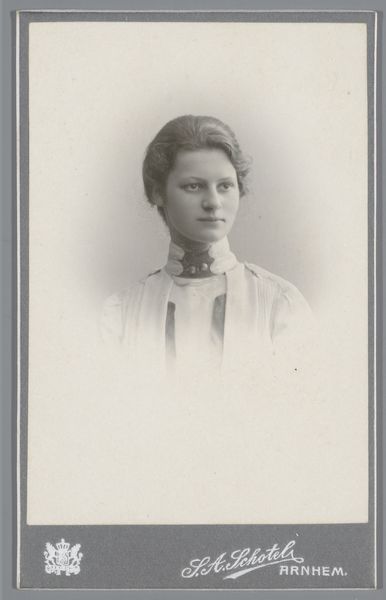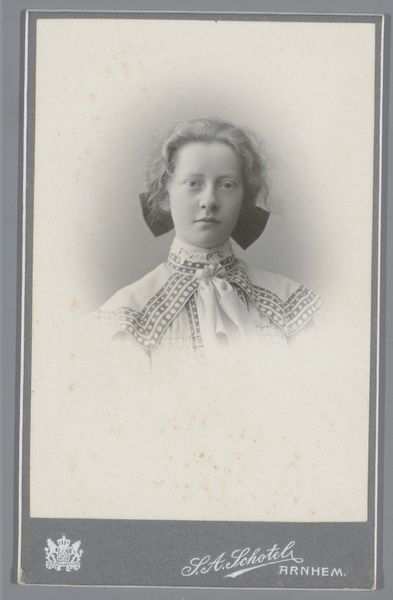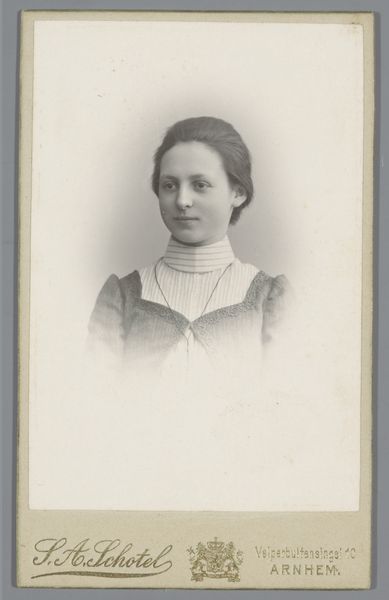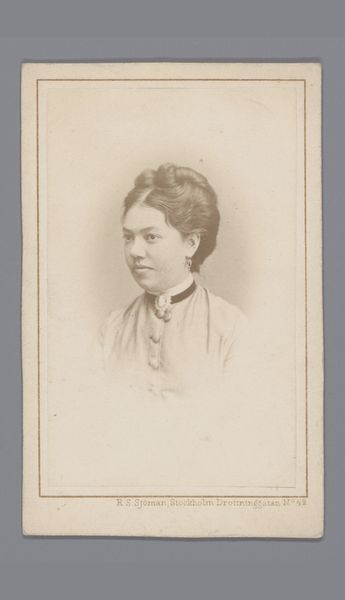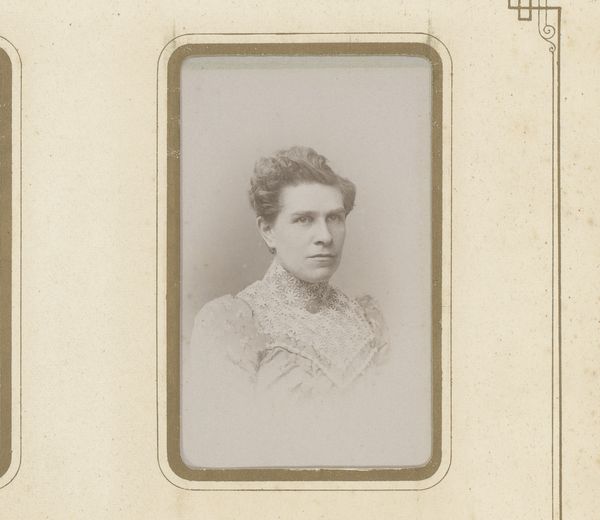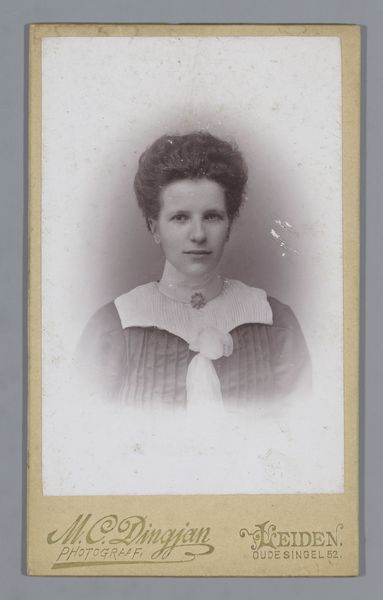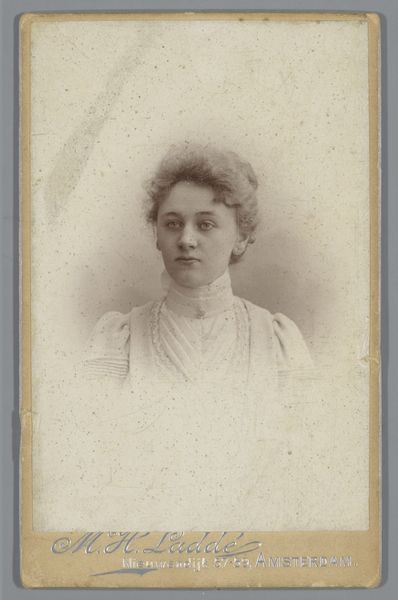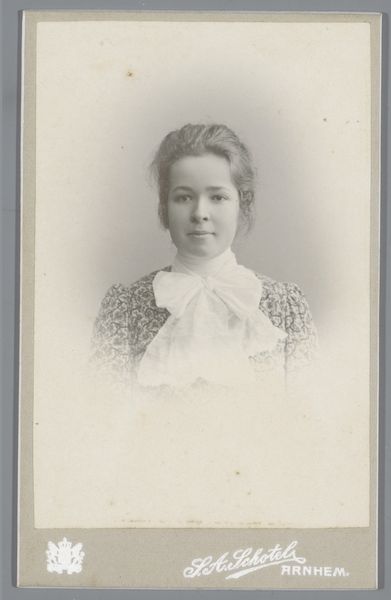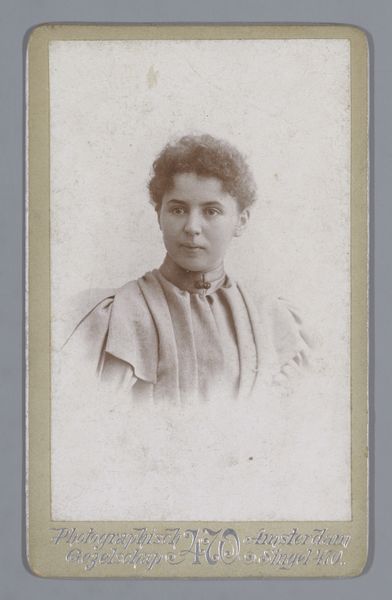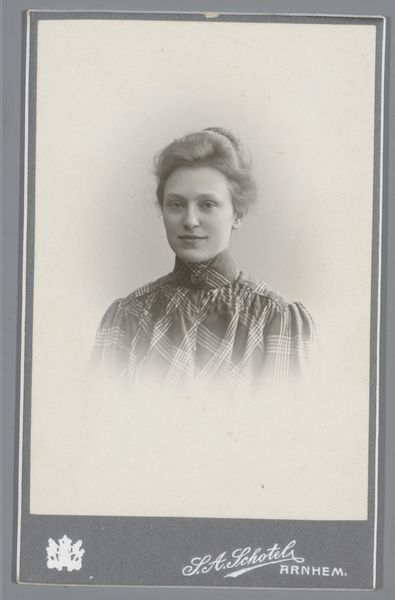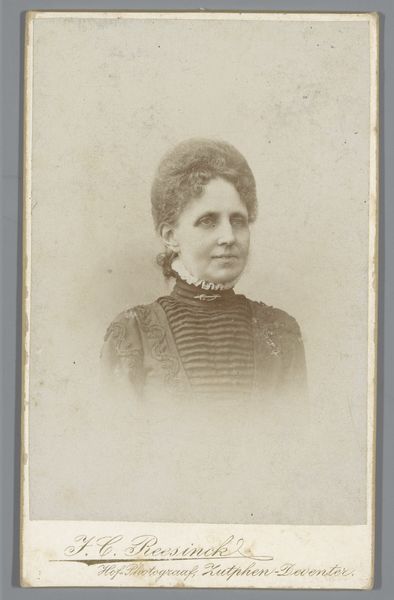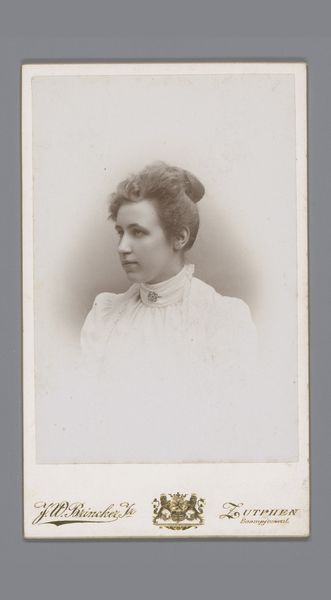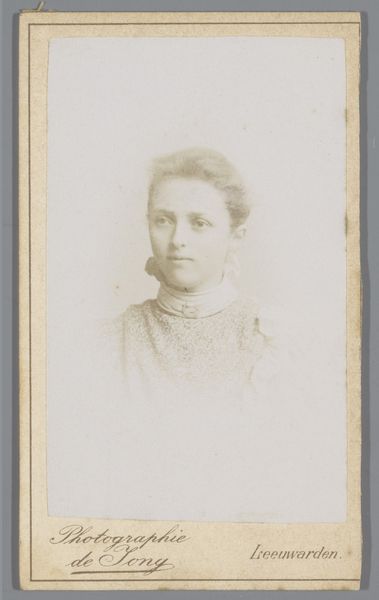
photography
#
portrait
#
historical design
#
still-life-photography
#
art-nouveau
#
pictorialism
#
archive photography
#
photography
#
historical fashion
Dimensions: height 104 mm, width 64 mm
Copyright: Rijks Museum: Open Domain
Editor: This is a portrait by Stephanus Adrianus Schotel, taken between 1902 and 1906. It's a photograph of an unknown woman, and it's striking how it captures a very specific moment in time. What do you see in this piece? Curator: I see a fascinating intersection of class, gender, and photographic representation. This portrait, made through photography, freezes a moment for this woman. Consider what it meant to have your portrait taken in this period. Was this a conscious act of self-fashioning? What narrative is she trying to convey through her clothes and pose? Editor: That's interesting! I hadn’t thought about the 'act' of portraiture itself. It makes me wonder about who this woman might have been. Curator: Exactly. And how might her social standing influence her depiction? Pictorialism, an aesthetic movement evident here, aimed to elevate photography to the level of painting. Does the soft focus, evocative of painting, democratize representation or reinforce existing hierarchies by aestheticizing the subject? Is this photographic style used to legitimize this person, or other unknown people captured by Schotel's lens? Editor: So, it’s not just a portrait, but a document that speaks to societal structures and artistic ambitions of the time? Curator: Precisely! It invites us to consider how visual culture participated in shaping identities and reinforcing social norms at the turn of the century, and how photographic practice changed gender roles. It prompts important questions. What happens when we bring a feminist lens to historical narratives preserved through images like these? Editor: This makes me appreciate how much historical and theoretical depth is embedded in what seems like a simple portrait. Thank you! Curator: Absolutely. By looking critically, we allow historical images to speak to contemporary issues.
Comments
No comments
Be the first to comment and join the conversation on the ultimate creative platform.
